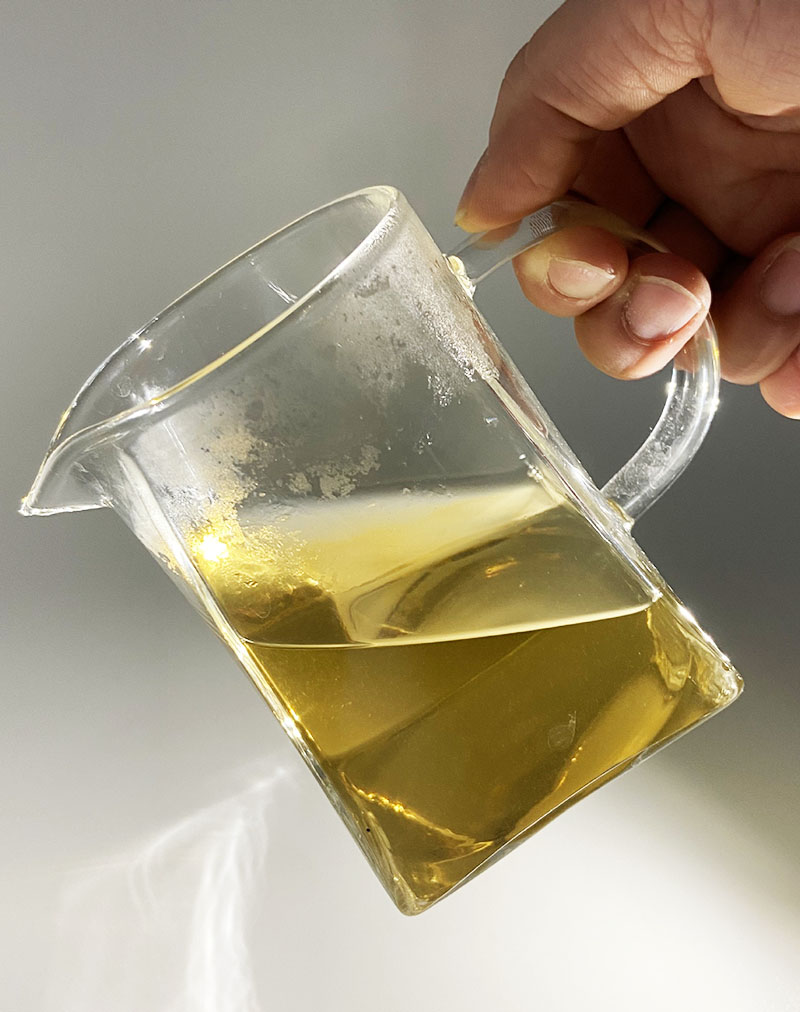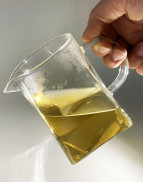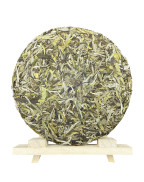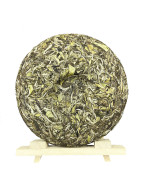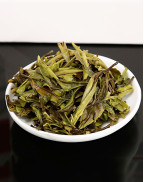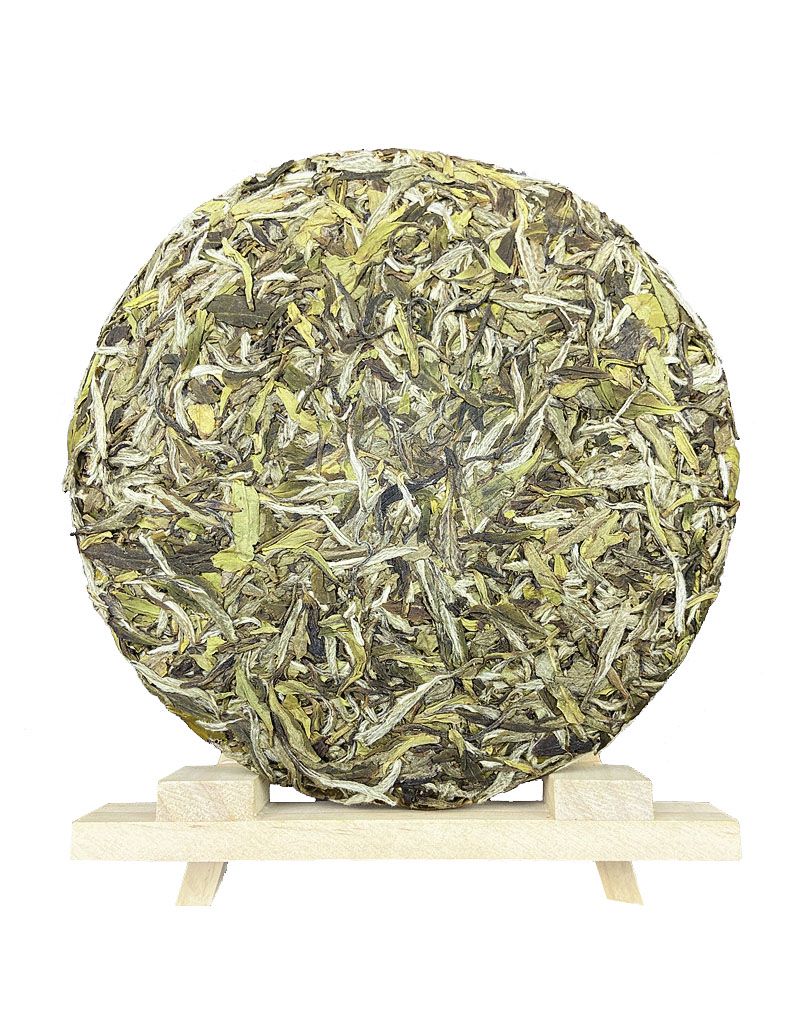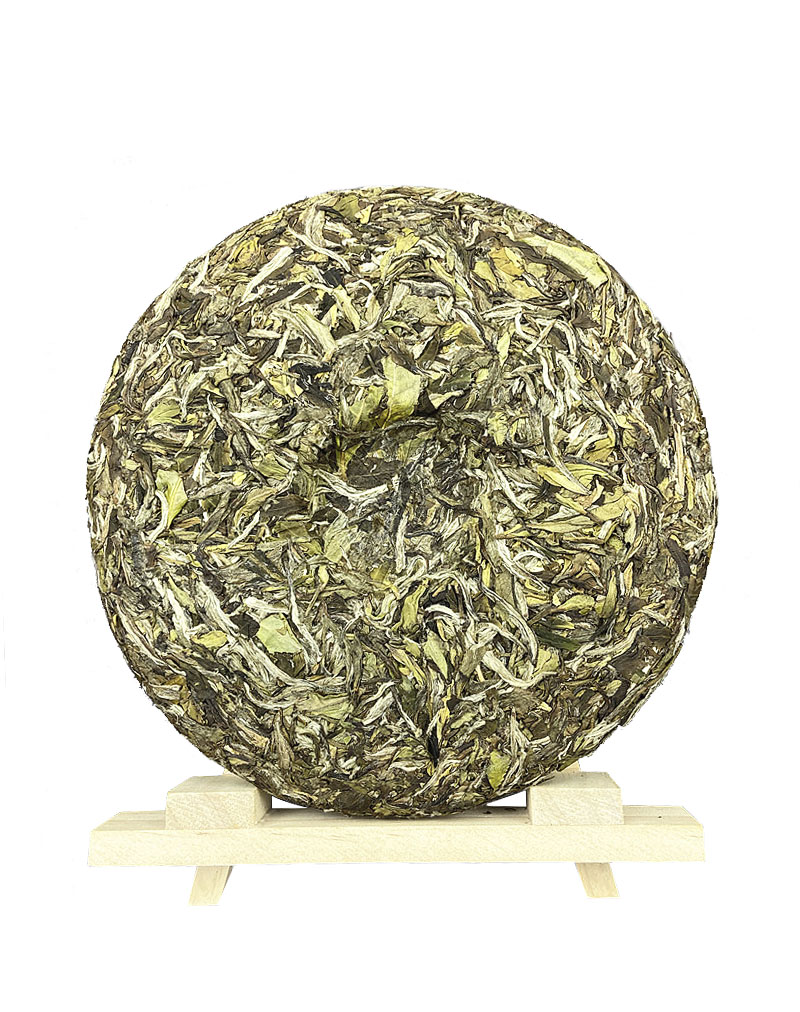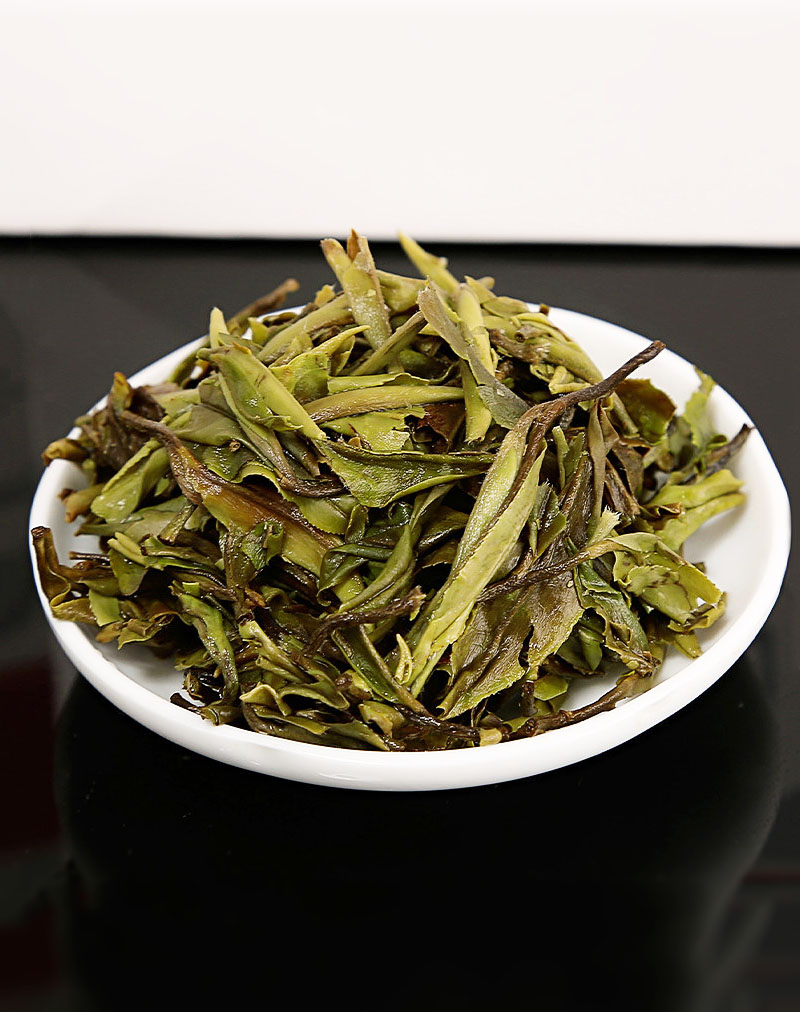Mingqian High Mountain Sun-dried White Peony Tea Cake
- Product Code: simple
- Availability: In Stock
Basic Info
Name: Mingqian High Mountain Sun-dried White Peony Tea Cake
Other Names: Mingqian High Mountain Sun-Dried Bai Mudan White Tea Cake
Category: Fujian White Tea
Origin: Fuding City, Fujian Province
Tea Bush: Fuding Daba
Taste & Aroma: Delicate, subtle and mellow, slightly sweet and floral undertone,refreshing
Liquor: Yellowish,clear and bright
Harvest Period: Spring 2024
Altitude: 700M above sea level
Fermentation: light
Season: Spring tea
Item Form: White tea cake
Ingredients: 100% hand-picked natural tea buds and leaves
Shelf Life: 10 -20 years
Storage: Stored in cool, airtight, opaque containers ()
Flavor: Unflavored
Mingqian High Mountain Sun-dried White Peony Tea Cake
Introducing our extraordinary white peony white tea cake, sourced from the scenic Fujian Fuding region in China. Crafted from the leaves and buds of tea trees grown in high-altitude settings, this exquisite cake tea is a prized gem of the 2019 harvest. With meticulous care taken during its creation, our white peony (Bai Mudan) tea cake undergoes a traditional sun-drying method and is harvested just before the Qingming Festival (Mingqian), resulting in limited quantities for a truly exceptional brew. Delicate floral notes are at the forefront, making this tea cake an aromatic delight that stands the test of multiple steepings. Experience the pure elegance and freshness of our Mingqing high-mountain white peony tea cake.
Mingqian (Pre-Qingming) White Tea
Pre-Qingming white tea, refers to the white tea harvested before the Qingming Festival, mainly picking higher grades such as Baihao Yinzhen (Silver Needle) and Bai Mudan (White Peony). Rain-before tea, on the other hand, is white tea harvested after the Qingming Festival and before the Guyu Festival, with Bai Mudan and Chun Mei or Shou Mei being the majority.
Although the harvest time of these two teas is not much different, they can have significant differences in quality and appearance. Pre-Qingming tea is mainly harvested in early spring when the temperature is low and the tea leaves grow slower. As a result, the tea leaves are very tender and the color is green. Moreover, after a cold winter, the accumulated nutrients in the tea leaves create the fresh and elegant taste of Pre-Qingming tea.
In comparison, the taste of Post-Qingming tea will be slightly stronger. This is mainly due to the rising temperature after the Qingming Festival, which significantly speeds up the growth of tea leaves. During the maturation process of the tea leaves, the content of tea polyphenols, caffeine, and other substances also increases, resulting in a richer taste. Pre-Qingming tea has a relatively low yield, so the price is relatively higher. Overall, tea leaves harvested at different times have some differences in appearance and taste, and each stage has loyal tea enthusiasts who appreciate them.
What is White Tea?

The Terrain And Tea Gardens Of Fuding City
Show Full Description
White tea, a unique treasure among Chinese teas, belongs to the category of lightly fermented teas. It is renowned for its silver-like appearance due to the abundant white hairs on the tea buds. White tea is one of China's six major tea types. Unlike other teas, white tea undergoes minimal processing, involving only sun-drying or gentle heat drying. Its distinctive features include intact tea buds, a covering of white hairs, a fresh fragrance, a clear yellow-green infusion, and a mild and refreshing taste. The name "white tea" first appeared in the Tang Dynasty in Lu Yu's "Classic of Tea," mentioning a place called "Bai Cha Shan" (White Tea Mountain) in Yongjia County. Scholars debate its origin, with some attributing it to the Tang Dynasty in Longxi County (Fuding, Fujian).
Main Production Areas of White Tea
The primary regions for white tea production include Fuding, Zhenghe, Zherong, Xinzhou Old Street in Wuhan, Tianshan in Jiaocheng, Songxi, Jianyang, and Jinggu in Yunnan. The basic processing steps involve withering, baking (or air-drying), sorting, and re-firing. White tea is categorized into four main types based on tea tree varieties and raw material requirements: Silver Needle, White Peony, Longevity Eyebrow, and Tribute Eyebrow.
Why Did Fuding Become The Birthplace Of Chinese White Tea?
Geographical location
Fuding is surrounded by plateaus on three sides and is located in the coastal area of northeastern Fujian. The terrain in Fuding is higher in the east and lower in the west, with large areas of undulating hills (elevations ranging from 500 to 800 meters) and many streams. There is abundant sunshine here, with a forest coverage rate of 69.3%. Taishan Mountain and Haishang Xiandu are famous tourist attractions, known for their steep mountains, spectacular rock formations, serene caves, and misty climate.
Climate characteristics
Fuding has a subtropical maritime monsoon climate, with mild climate throughout the year and an average annual temperature of 18.5°C. The rainfall is abundant, with an annual precipitation of 1661 mm.
Soil
The soils in the white tea region of Fuding include red soil, yellow soil, dark brown soil, and alluvial soil, with red and yellow soils being the main types. The main varieties planted are Fuding Da Bai Cha and Fuding Da Bai Hao, which are nationally recognized superior tea varieties also known as Huacha 1 and Huacha 2.
Where does the flower fragrance of Bai Mu Dan (White Peony) come from?

Fuding Daba
As we all know, fresh tea leaves contain many kinds of aromatic chemical. Some of them are responsible for
emitting fragrance which is very important for the quality of tea. These aromatic substances are unstable in
nature, and a series of chemical reactions are easy to occur during tea processing. These chemical reactions are
the secrets of tea flavor.
Different processing methods and external conditions lead to different fragrances and tastes. Some teas, such
as black tea and oolong tea, require relatively complex processing techniques to produce. A series of oxidation
and polymerization reactions will take place in the process of making tea under humid and high temperature
conditions, which will lead to the reduction of some aromatic substances and the generation of new aromatic
substances.
Compared with white tea, the production processes of fully fermented black tea and semi-fermented oolong tea
are relatively complicated. This is probably the reason why there are great differences between black tea,
oolong tea and white tea in taste and aroma.

The Core Production Areas Of White Tea In China
Because white tea has undergone the least processing steps, in a sense, white tea has retained more of its
own flavor.
This kind of tea is from an organic certified tea garden in Fujian. This tea garden, like most organic tea
gardens in China, is located in a mountainous area, far away from cities and managed by professional and
technical personnel. The chemical fertilizers and pesticides are not allowed in the tea garden, so the quality
of organic tea grown here is very good.
According to the grading standard, this inferior to Bai Hao Yin Zhen tea in grade. But it does not mean this
tea is not good. On the contrary, this tea is cost-effective. When brewing, the floral fragrance and Xiang Hao
(fur fragrance) are very prominent. It has attracted a large number of tea lovers for its flavour and good
tastes.
If you are unfamiliar with white tea and want to give it a try, this organic white tea will not let you
down.
Introduction to Fujian White Tea
White tea, one of China's six major tea types, has long been associated with Fujian. The development history of Fujian white tea reflects the overall development of white tea in China. Silver Needle, a type of white tea, originated in Fuding County and gradually spread to regions in Min Dong and Min Bei, extending to Shuiji, Zhenghe, and Songxi.
Fujian's special tea, white tea, has been a traditional export commodity through the port of Fuzhou. Initially focused on exports, white tea gained popularity in foreign markets, including Indonesia, Singapore, Malaysia, Germany, France, the Netherlands, Japan, the United States, Peru, and Hong Kong.
The predecessor of China Tea Fujian Company, founded in 1950, was the Fuzhou Branch of China Tea Company. It was one of the earliest companies in New China engaged in white tea trade.
Why Produce White Tea Cakes?
Fuding white tea "cake tea" is primarily created by steaming and softening the loose white tea, then pressing it into molds and drying it. The process of pressing white tea into cakes has become a trend due to several reasons:
Cake tea saves warehouse space compared to loose tea, making it more cost-effective for storage.
The pressed tea has a richer and more mellow flavor compared to loose tea.
Cakes are convenient for transportation, reducing potential damage during transit.
Production Process

a Worker Is Handcrafting White Tea Cakes
The white tea cake production process involves eight main steps:
Sorting: Loose tea is sorted before pressing.
Removing impurities: Any unwanted particles are removed.
Weighing: The tea is weighed according to the desired cake size.
Steaming: The tea is placed on a steamer to soften the leaves and restore elasticity.
Pressing: The softened tea is pressed into molds to form the cakes.
Spreading: The pressed cakes are spread out for aeration, moisture reduction, and inspection.
Drying: The cakes are placed in ovens for slow drying, usually taking about three days.
Aging: The pressed white tea cakes are allowed to mature for at least 3-6 months, preferably during the dry seasons of summer and autumn, ensuring uniformity and transparency.
Despite its seemingly simple appearance, the production of a white tea cake involves numerous intricate steps and complex processes. Understanding the meticulous craftsmanship involved enhances our appreciation for the preciousness of each tea leaf.

The Path Leading To The White Peony Tea Garden
In a world brimming with choices, our mingqian white peony white tea cake truly stands out. The rare combination of encompassing a noticeable floral fragrance with a refreshing and mild taste makes it a must-try for tea enthusiasts. Its capability to withstand multiple infusions ensures that each sip is as invigorating as the last. Invoke a sense of tranquility and indulge in the graceful charm of this tea. Experience the finest quality white tea that unfolds with every cup, and discover a taste that will leave a lasting impression. Elevate your tea-drinking experience with our exquisite white peony white tea cake and savor the essence of pure sophistication.
| Chinese Gongfu Method | |
| Tea | 3g |
| Water | Gaiwan 4oz / 110ml |
| Time | 4 steeps (10s,15s,30s,1m) |
| Temperature | 90°c |
| Teapot Method | |
| Tea | 5g |
| Water | Teapot (8oz / 240ml) |
| Time | 1- 4mins |
| Temperature | 90°c |


